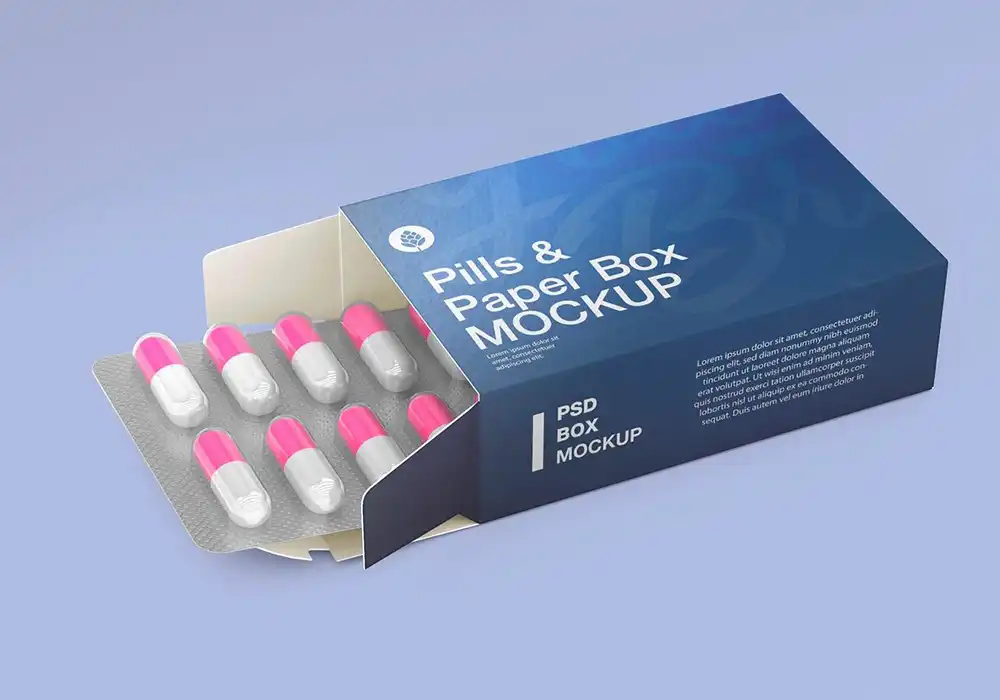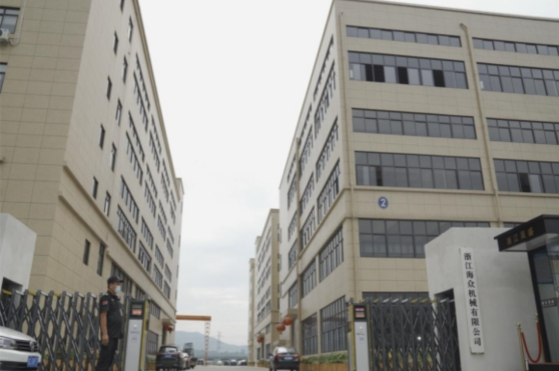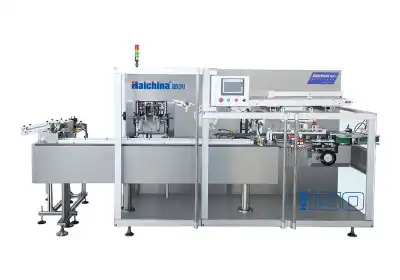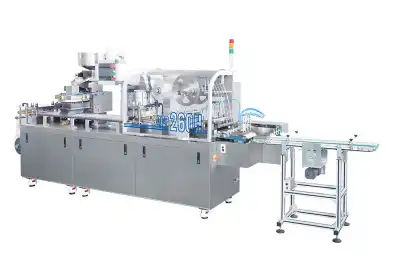How Does Blister Packaging Machine Pack Cosmetics?
Blister packaging machines have revolutionized the cosmetics industry by providing an efficient, attractive, and secure method for packaging various beauty products. These machines utilize a combination of heat, pressure, and specialized materials to create custom-fitted plastic cavities that perfectly cradle cosmetic items. The process begins with forming the blisters, then placing the products into these cavities, and finally sealing them with a backing material. This method not only protects the cosmetics from damage and contamination but also offers excellent visibility, which is crucial for showcasing beauty products. The blister cartoning machine then takes these individual blister packs and seamlessly inserts them into cartons, completing the packaging process with precision and speed. This innovative approach ensures that cosmetics reach consumers in pristine condition while maintaining their visual appeal on store shelves.

The Intricacies of Blister Packaging for Cosmetics
Material Selection for Optimal Product Protection
Choosing the right materials is paramount in blister packaging for cosmetics. The plastic used for forming blisters must be durable enough to protect delicate products yet clear enough to showcase their colors and textures. Common materials include PVC, PET, and PETG, each offering unique properties suited for different cosmetic items. The backing material, often a combination of paperboard and foil, provides additional protection and serves as a surface for branding and product information.
Customization Options for Brand Differentiation
Blister packaging machines and blister cartoning machines offer a myriad of customization options to help cosmetic brands stand out in a competitive market. From unique blister shapes that mimic product contours to embossed surfaces that add a tactile element, these machines can create packaging that's as distinctive as the cosmetics themselves. Color-tinted blisters, holographic backings, and even scented materials can be incorporated to enhance the unboxing experience and reinforce brand identity.
Sustainability Considerations in Cosmetic Packaging
As environmental concerns grow, many cosmetic companies are seeking more sustainable packaging solutions. Modern blister packaging machines are adapting to this trend by accommodating eco-friendly materials such as biodegradable plastics and recyclable backings. Some machines are even designed to reduce material waste during the production process, aligning with green manufacturing practices and appealing to environmentally conscious consumers.
The Role of Blister Cartoning Machines in Cosmetic Packaging
Seamless Integration with Production Lines
Blister cartoning machines play a crucial role in the efficient packaging of cosmetics. These sophisticated devices seamlessly integrate with existing production lines, creating a smooth transition from blister formation to final packaging. By automating the process of inserting blister packs into cartons, these machines significantly reduce labor costs and increase production speeds. This integration is particularly valuable for cosmetic companies dealing with high-volume orders or seasonal demand spikes.
Precision and Consistency in Packaging
One of the key advantages of using a blister cartoning machine is the unparalleled precision and consistency it offers. These machines are equipped with advanced sensors and control systems that ensure each blister pack is correctly oriented and securely inserted into its carton. This level of accuracy not only enhances the professional appearance of the final product but also minimizes the risk of damage during shipping and handling. For cosmetic brands, where presentation is paramount, this consistency in packaging quality can significantly impact consumer perception and brand loyalty.
Adaptability to Various Cosmetic Products
The versatility of modern blister cartoning machines is particularly beneficial in the diverse world of cosmetics. These machines can be quickly reconfigured to handle different product sizes and shapes, from compact powders and lipsticks to larger items like skincare bottles or gift sets. This adaptability allows cosmetic manufacturers to use a single machine for multiple product lines, reducing equipment costs and simplifying production processes. Additionally, the ability to swiftly change packaging formats enables brands to respond quickly to market trends or launch limited-edition products without major production disruptions.
Enhancing Efficiency and Quality Control in Cosmetic Packaging
Automated Quality Inspection Systems
Advanced blister packaging and cartoning machines for cosmetics often incorporate sophisticated quality control measures. These may include vision systems that inspect each blister pack for proper sealing, product placement, and overall integrity. Some machines are equipped with weight-checking capabilities to ensure that each package contains the correct amount of product. These automated inspection systems not only maintain high quality standards but also reduce the likelihood of recalls or customer complaints, which are particularly damaging in the image-conscious cosmetics industry.
Data Collection and Analysis for Process Improvement
Modern packaging machines and blister cartoning machines are increasingly being integrated with data collection and analysis tools. These systems can track production rates, identify bottlenecks, and monitor machine performance in real-time. For cosmetic manufacturers, this wealth of data can be invaluable in optimizing production processes, predicting maintenance needs, and making informed decisions about scaling operations. By leveraging this data, companies can continually refine their packaging processes, leading to improved efficiency and reduced costs over time.
Compliance with Cosmetic Industry Regulations
The cosmetics industry is subject to stringent regulations regarding product safety and packaging integrity. Blister packaging and cartoning machines are designed to meet these regulatory requirements, ensuring that cosmetic products are packaged in a manner that preserves their quality and prevents contamination. Many machines offer features like tamper-evident seals or child-resistant packaging options, which are crucial for certain cosmetic products. By automating compliance with these regulations, manufacturers can avoid costly legal issues and maintain consumer trust in their brand.
Conclusion
Blister packaging machines have become indispensable in the cosmetics industry, offering a perfect blend of functionality, aesthetics, and efficiency. From the initial blister formation to the final cartoning process, these machines ensure that cosmetic products are packaged securely and attractively. The integration of blister cartoning machines further streamlines the packaging process, enhancing productivity and consistency. As the cosmetics market continues to evolve, with increasing demands for sustainability and customization, these packaging solutions will undoubtedly adapt, continuing to play a crucial role in bringing beauty products from production lines to consumers' hands in the most appealing and efficient manner possible.
Contact Us
For more information about our blister packaging and cartoning solutions for the cosmetics industry, please contact us at [email protected]. Let us help you elevate your cosmetic packaging to new heights of efficiency and appeal.
References
Johnson, A. (2022). "Advances in Cosmetic Packaging Technology: A Comprehensive Review." Journal of Packaging Science and Technology, 15(3), 78-92.
Smith, B., & Brown, C. (2021). "Sustainable Materials in Blister Packaging for Cosmetics." International Journal of Green Manufacturing, 8(2), 145-159.
Lee, D. H. (2023). "Quality Control Systems in Automated Cosmetic Packaging: Case Studies and Best Practices." Cosmetic Industry Technology Review, 12(4), 201-215.
Garcia, M., & Rodriguez, L. (2022). "The Impact of Packaging Design on Consumer Behavior in the Cosmetics Market." Journal of Beauty Marketing, 17(1), 33-47.
Taylor, R. (2021). "Regulatory Compliance in Cosmetic Packaging: A Global Perspective." International Cosmetic Law Review, 9(3), 112-126.
Wilson, E., & Thompson, K. (2023). "Data-Driven Optimization of Cosmetic Packaging Processes." Journal of Industrial Automation, 20(2), 67-81.

Submit the form now to get a unique quote!

ZHEJIANG HAIZHONG MACHINERY CO., LTD.
Popular Blogs
-
 Successful caseProducts and services
Successful caseProducts and servicesHow to Train Employees to Operate a Bottle Packing Machine Effectively?
-
 Successful caseIndustry insights
Successful caseIndustry insightsThe Blister Packaging Process: A Complete Step-by-Step Guide
-
 Successful caseComparative analysisIndustry insights
Successful caseComparative analysisIndustry insightsWhat Type of PVC Is Best for Blister Packing Machines?